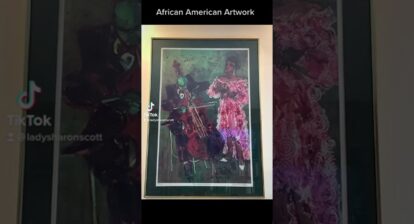What a fabulous collection of 13 Jean-Michel Basquiat art pieces at The Broad art museum in downtown Los Angeles. Basquiat explores and questions many themes around blackness, its glories, histories, and pain, as he confronts colonialism, slavery and discrimination.
0:06 Untitled (Skull) 1981
may be considered a form of self-portraiture. The skull here exists somewhere between life and death. The eyes are listless, the face is sunken in, and the head looks lobotomized and subdued. Yet there are wild colors and spirited marks that suggest a surfeit of internal activity.
0:18 Obnoxious Liberals, 1982
depicts a series of figures representing capitalism and its hapless, powerless victims. The exploited, corroded victim, on the one hand, is virtually held hostage by the minions of mainstream White American culture, as represented by dollar signs, cowboy hats and Uncle Sam top hats as well as a “Not For Sale” sign. The victim’s dark skin also hints at the systematic oppression of African-Americans.
0:30 Untitled, 1981
While Jean-Michel Basquiat is well known for his prolific production of paintings during his brief career, his drawings were also an incredibly important part of his artistic practice. Often drawings were collaged into Basquiat’s paintings, serving as the generative material for painted images. The many collaged drawings in this work present incidents taken from the history of the Roman Empire, particularly moments involving transitions of power.
References to the burning of Carthage, the assassination of Julius Caesar, and the sack of Rome by the Goths all appear on the surface, partially covered by an aggressive wash of red paint, like the bloody and violent nature of power in its many forms.
0:46 Gold Griot, 1984
a narrator of African history, and a mythical talisman
0:59 Pink Devil, 1984
Pink Devil, whose title presumably riffs on the name “white devil.” It is a festival of vibrant colors and information, collecting many of the artist’s themes into a single statement. Industries connected to slavery (sugar and tobacco) appear among many references to the Mississippi River. Emphasis is placed on how the water flows, how it is used for transport, and how it has historically symbolized and embodied a transition from the legal institution of slavery in the South to the free, poverty-stricken, and embattled lives of Black people in the North. The pink devil, hornet-like in form, presides over this history, hovering over it like a poisonous cloud.
1:17 Melting Point of Ice, 1984
At the bottom a shepherd with a donkey, At the top a sitting elephant, a single head resembling an African sculpture is in the top right hand corner, oversized, and with eyes and a mouth that glow in bright tones of red and yellow
1:32 Eyes and Eggs, 1983
Anecdotally, the painting Eyes and Eggs has been tied to a short-order cook named Joe, from a diner that the artist frequented. The cook takes on a gravity and status among Basquiat’s many portraits, graphically direct and large in size. His eyes glow with intensity, rendered in red, matching the eggs that he prepares. Yet, purposefully, Basquiat paints the man with no mouth (covered or smeared with white pigment), suggesting that he has been denied his voice, working behind the scenes for little money, seen but not heard.
1:46 Horn Players, 1983
is an homage to the great horn players
Charlie Parker alto saxophone on the left
Parker’s legendary jazz standard “Ornithology,” in the middle
Dizzy Gillespie trumpet on the right.
2:22 Deaf, 1984
an empathetic image of a figure strumming a harp. In text above the figure reads “BLIND HARP PLAYER®”
2:37 Wicker, 1984
2:53 Santo 2, 1982
3:13 Beef Ribs Longhorn, 1982
And you start to look at this longhorn livestock, and suddenly it’s this monstrous image of this animal, and this almost sick, almost terrifying dream, that nightmarish vision. It’s a beast, and a demon, and an animal, and a human without a doubt. So these things kind of get jumbled and get pulled together.
Only one of the collection wasn’t on view:
3:27 With Strings Two, 1983
refers to Charlie Parker





